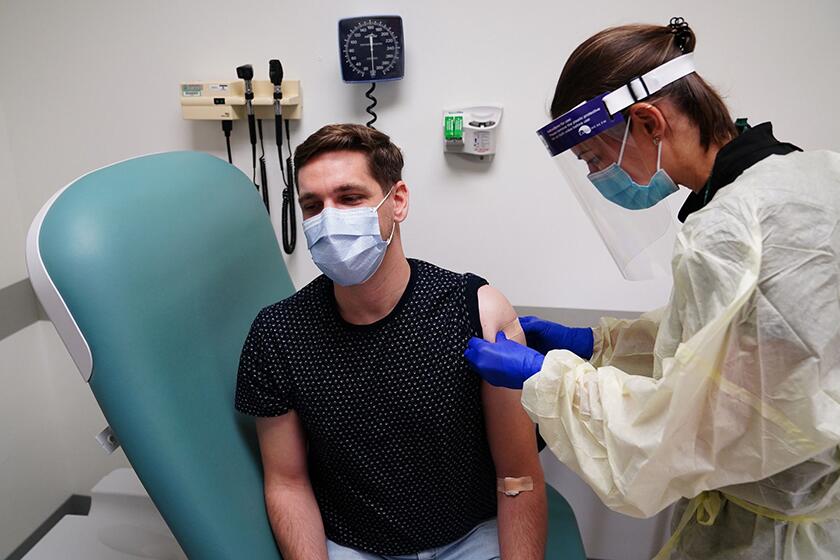The puzzling controversy over an Ecstasy fact card
- Share via
As a physician who has researched and written extensively about MDMA, I took a keen interest in the Ecstasy fact card controversy developing in Los Angeles. The Los Angeles Department of Public Health is taking quite a bit of heat right now for the card it created to be distributed at large-scale rave dance parties in the city, as reported in a Feb. 8 L.A. Now blog post. The fact card explains the physical effects of Ecstasy, the risks involved in its use and how to reduce these risks, including by choosing not to take the substance at all.
These cards were developed and approved by a panel of experts, including physicians, public health experts and harm reductionists. But of course no sensible idea goes unpunished when it comes to helping people stay safe and avoid drug-related injuries; local politicians are manufacturing unnecessary drug hysteria and calling for the cards to either be altered or banned entirely. Presumably those people believe that if we simply don’t tell people how to be safe if they decide to use Ecstasy, young people will either just not take it or they will somehow intuit how to avoid hurting themselves if they do. The fact card certainly doesn’t glamorize or encourage illegal drug use, so it’s hard to understand why some oppose it so strongly.
Like any responsible physician, I am highly aware of the dangers and risks of alcohol and drug abuse and addiction. I share concerns about young people using Ecstasy at these raves. I empathize with the desire to protect as many young people as possible from all dangerous substances. But the fact is that Ecstasy is not the “killer drug” politicians would like us to believe.
Most adverse events associated with the consumption of Ecstasy can be avoided or mitigated by taking common-sense steps, many of which are detailed on the fact card. Warnings about the dangers of Ecstasy appear often, including, “Most medical emergencies or deaths are from heart problems or complications from hyperthermia (increased body temperature) and hyponatremia (electrolyte imbalance from drinking too much water too fast).”
Hyponatremia is a real concern. Encouraging people who consume Ecstasy to stay hydrated is vital, but it’s equally important to emphasize the risks of drinking too much water too quickly. The Department of Public Health did the right thing by including this risk factor on the card.
It’s puzzling why such an innocuous information delivery system has generated controversy. It’s one thing to disapprove of young people using alcohol and other drugs; it’s another thing entirely to prevent them from accessing information that could literally save their lives. The ultimate responsibility for any child’s safety always rests with the parent, but we should be applauding the L.A. County Department of Public Health for taking this important first step to help keep young people safe.
Young people need more of the facts about the risks of drug use, not fewer. A consistent parental and public health response to the realities of drug use by young people is essential to their safety.
Julie Holland is a board-certified psychiatrist. She edited the book, “Ecstasy: The Complete Guide.”
More to Read
A cure for the common opinion
Get thought-provoking perspectives with our weekly newsletter.
You may occasionally receive promotional content from the Los Angeles Times.









